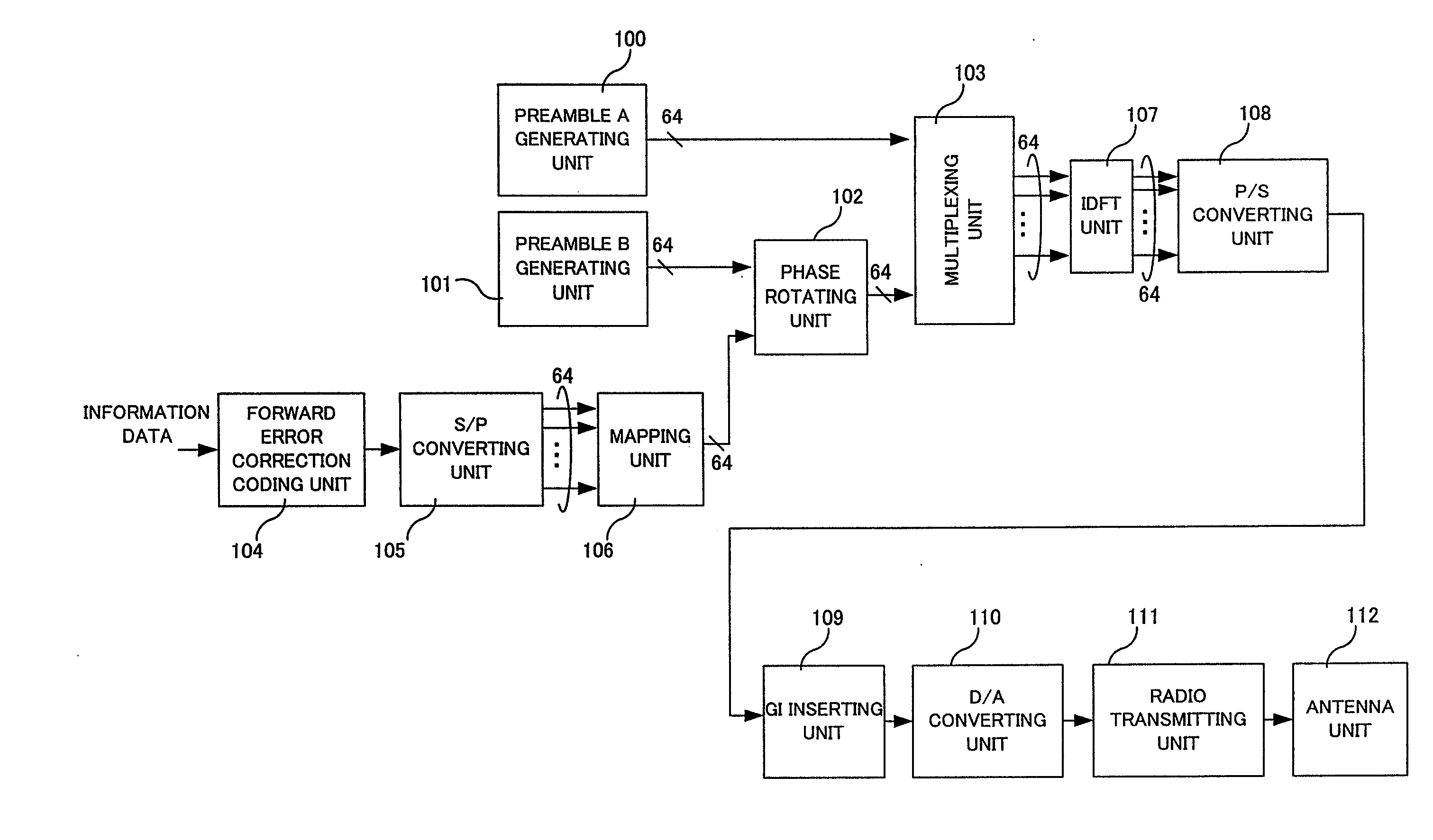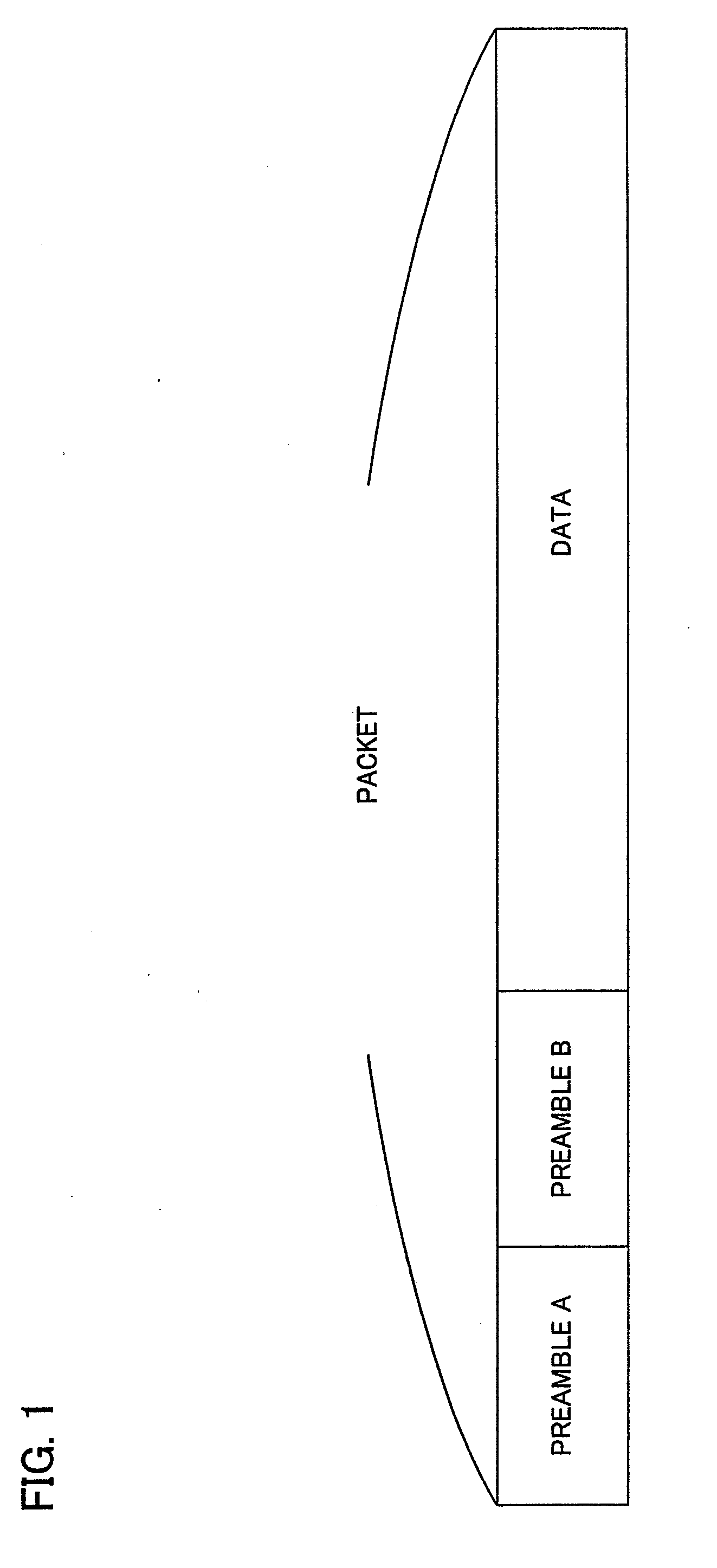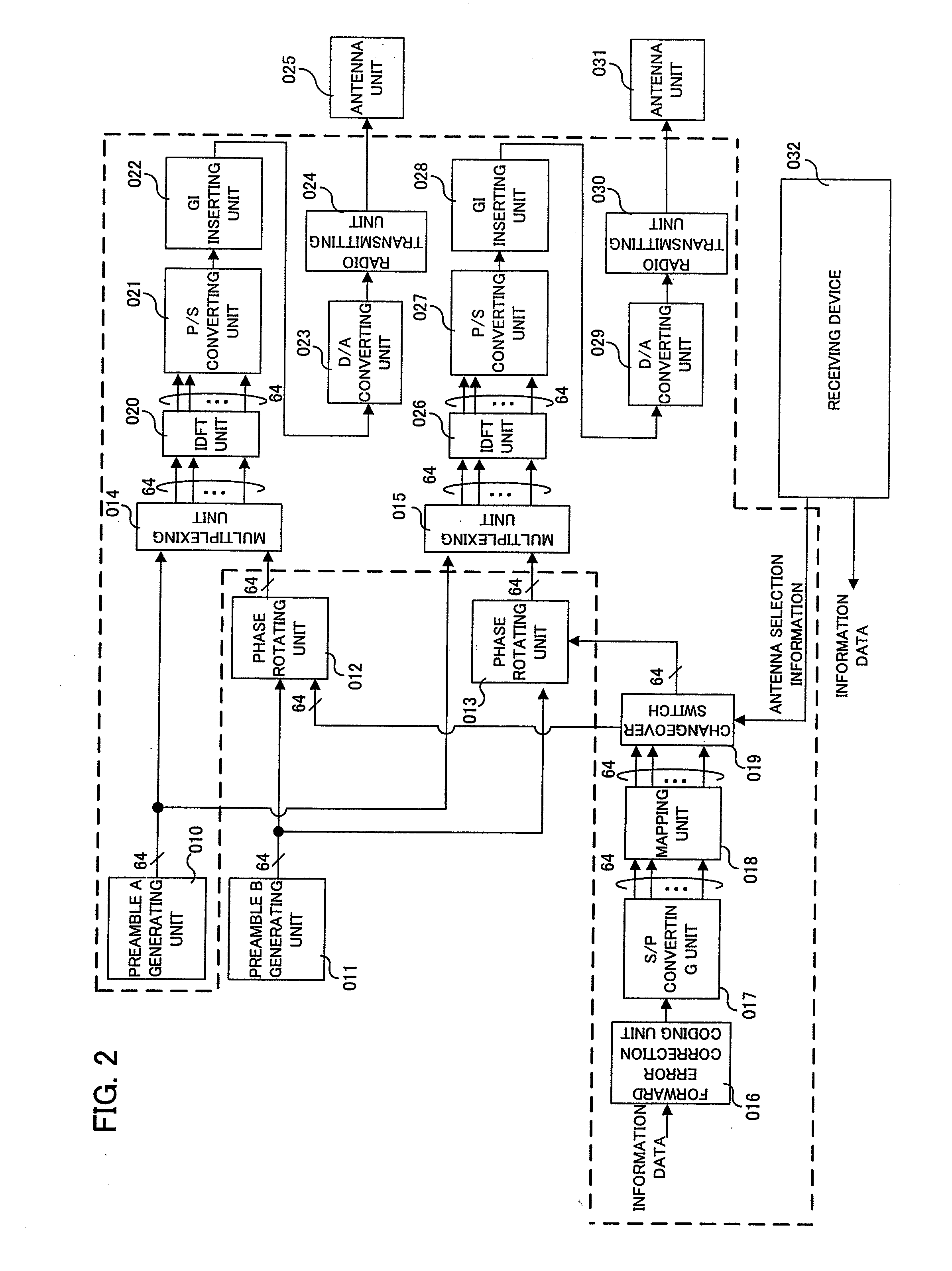Communication device
a communication device and receiver technology, applied in the field of communication devices, can solve the problems that the thermal noise in the receiver is not considered herein for simplicity, and achieve the effects of high accuracy, easy performance of site diversity, and high accuracy
- Summary
- Abstract
- Description
- Claims
- Application Information
AI Technical Summary
Benefits of technology
Problems solved by technology
Method used
Image
Examples
first embodiment
[0047]First, a radio communication technique according to the present invention will be described with reference to the drawings.
[0048]The radio communication technique according to the first embodiment of the present invention is directed to downlink transmission, in which a transmitting (base station) side comprises a plurality of antennas, and relates to an antenna selection manner for performing transmitting antenna selection diversity. According to this embodiment, a plurality of antennas simultaneously transmit OFDM signals, and a receiving side separates the signals transmitted from the respective antennas and estimates which antenna has transmitted a received signal having the highest power.
[0049]FIG. 2 is a diagram showing a configuration example of a transmitting device of a base station among radio communication devices according to the first embodiment of the present invention. However, an example is described in which the transmitting device comprises two transmitting a...
second embodiment
[0064]First, a configuration example of a transmitting device according to the present invention is shown in FIG. 9. FIG. 9 is a diagram showing a configuration example of a transmitting device including three transmitting antennas. As shown in FIG. 9, the transmitting device according to this embodiment includes a preamble A generating unit 200, a preamble B generating unit 201, phase rotating units 202, 203 and 204, multiplexing units 205, 206 and 207, a data modulating unit 208, a changeover switch 209, IDFT units 210, 216 and 222, P / S converting units 211, 217 and 223, GI inserting units 212, 218 and 224, D / A converting units 213, 219 and 225, radio transmitting units 214, 220 and 226, and antenna units 215, 221 and 227. As shown in FIG. 9, the transmitting device according to this embodiment is configured to select to perform signal processing on the two preamble generating units 200 and 201 and output signals from the preamble generating units 200 and 201 directly or through t...
third embodiment
[0076]As above, the radio communication technique according to this embodiment can separate a delay profile. Because of this, even in the environment in which delay time of a delay wave arriving at the receiving device varies largely, the appropriate number of transmitting antennas can be selected and channel response can be estimated with high accuracy. That is, the technique has an advantage that can realize stable MIMO transmission. Next, a radio communication technique according to the present invention will be described with reference to the drawings.
[0077]As described above, in the description of the first and second embodiments of the present invention, an example has been shown that the present invention is applied to the configuration in which a transmitting device comprises a plurality of antennas. However, even if each of a plurality of transmitting devices use a single antenna, the transmitting devices are given different phase rotation, so that delay profiles of signals...
PUM
 Login to View More
Login to View More Abstract
Description
Claims
Application Information
 Login to View More
Login to View More - R&D
- Intellectual Property
- Life Sciences
- Materials
- Tech Scout
- Unparalleled Data Quality
- Higher Quality Content
- 60% Fewer Hallucinations
Browse by: Latest US Patents, China's latest patents, Technical Efficacy Thesaurus, Application Domain, Technology Topic, Popular Technical Reports.
© 2025 PatSnap. All rights reserved.Legal|Privacy policy|Modern Slavery Act Transparency Statement|Sitemap|About US| Contact US: help@patsnap.com



